This post may contain affiliate links. Please read our disclosure policy.
These fudgy gluten free brownies have deep chocolate flavor, a chewy center, and the shiny crinkly top you usually only get from a box.
The secret? Melting the butter and sugar first. With a full cup of cocoa powder and plenty of chocolate chips, these brownies strike the perfect balance between rich and sweet—and you'll never miss the mix.
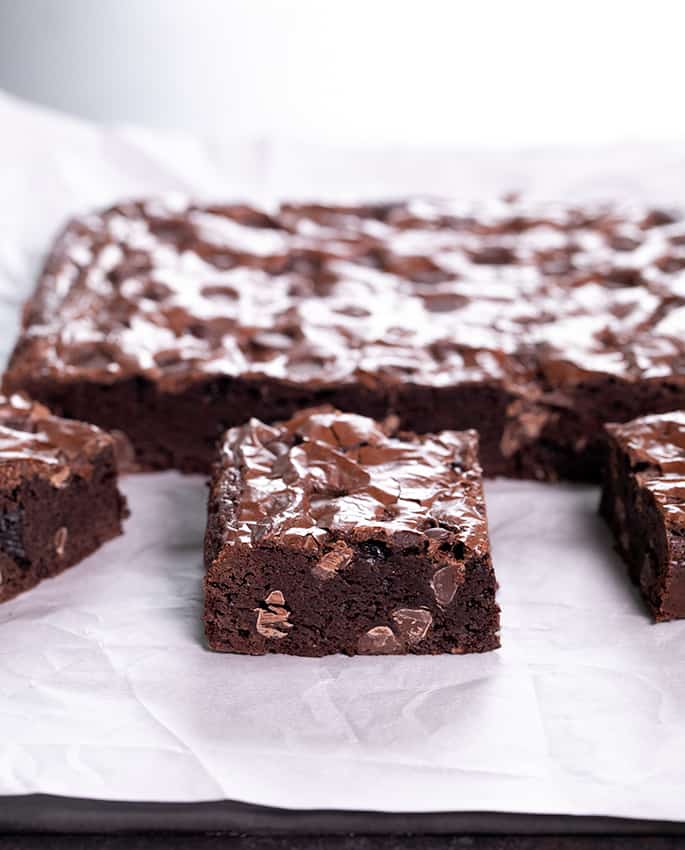
“These are AMAZING! I was diagnosed celiac 5 years ago and have usually just used gluten free boxed brownies… never again!”
My take
Nicole's Recipe Notes
That crackly top: It’s not luck—it comes from melting the sugar into the butter, then beating it well into the eggs.
Fudgy, chewy center: These brownies have a dense bite, but they’re never gooey or cakey.
Deep chocolate flavor: A full cup of cocoa powder gives you a rich, intense base without needing melted chocolate.
Plenty of chips: Five ounces in the batter, plus more on top, add pockets of melty chocolate.
Easy to customize: Add nuts, flavored chips, or a swirl of marshmallow or nut butter before baking.
How to make gluten free brownies
To make the perfect brownies, start by melting the butter and sugar together until the mixture is bubbling and the sugar is mostly dissolved. Let it cool slightly.
In a large mixing bowl, whisk the eggs and vanilla. Slowly drizzle in the warm butter-sugar mixture while whisking constantly so the eggs don’t scramble.
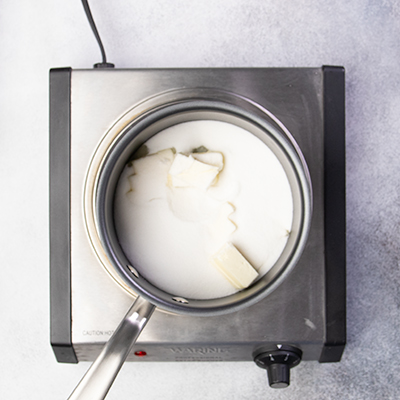
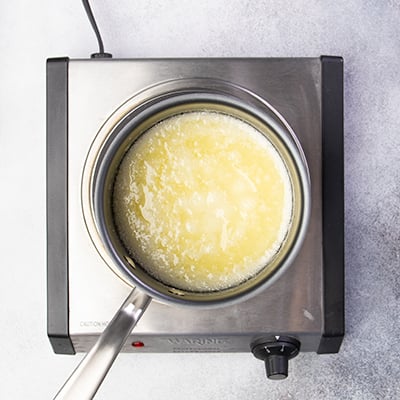
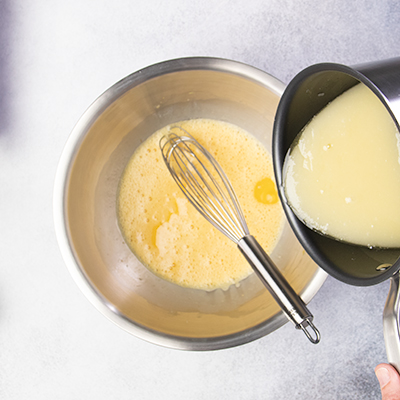
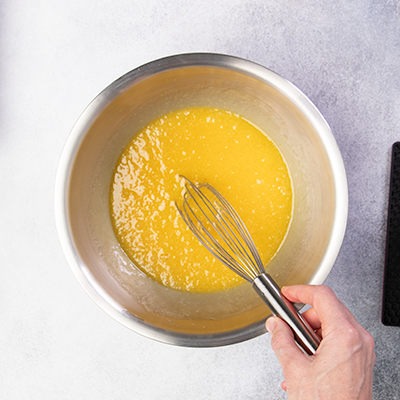
Whisk in the cocoa powder until smooth, then switch to a spatula and stir in the flour, xanthan gum (if needed), cornstarch, baking soda, and salt.
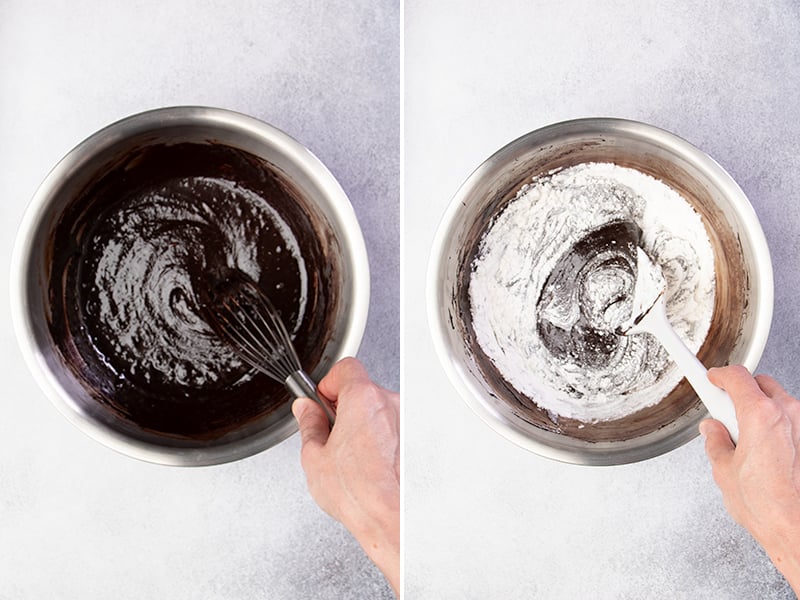
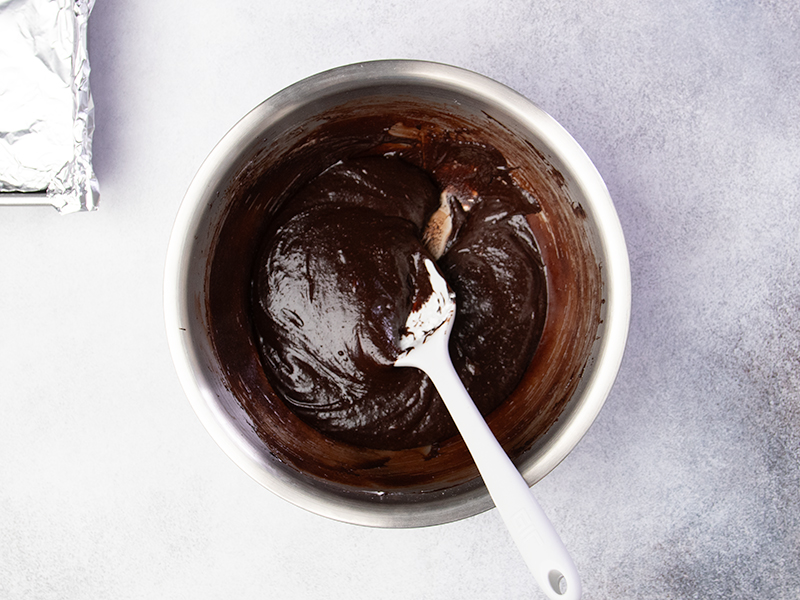
Fold in most of the chocolate chips, then spread the thick batter into a prepared 8-inch metal pan. Top with the remaining chips.
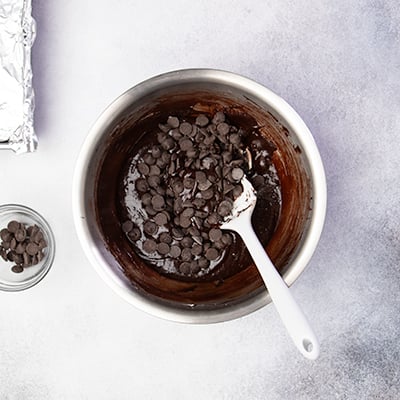
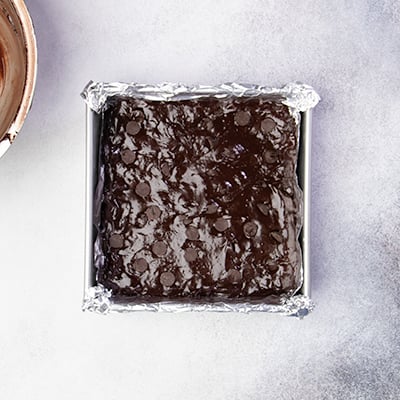
Bake at 325°F for about 30 minutes, until the center is no longer shiny. Cool in the pan, then chill for an hour before slicing for the cleanest squares.
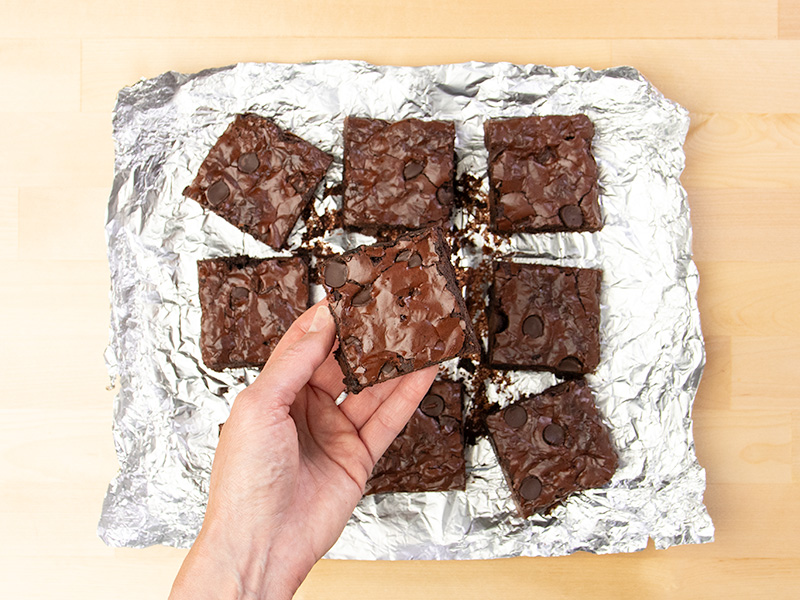
My Pro Tip
Expert Tips for the Best Gluten Free Brownies
Melt the butter and sugar first
Don’t skip this step! Heating the sugar with the butter helps dissolve the sugar crystals and gives you that signature crinkly top.
Beat the eggs well
The texture of your brownies depends on it. Well-beaten eggs help create structure and chew—and they help trap air for that shiny top.
Use a light-colored metal pan
A light cast aluminum or anodized metal pan bakes evenly and won’t overheat. Avoid glass or ceramic, which retain heat and can lead to burned edges.
Line your pan, even if it’s nonstick
Use parchment or foil to make cleanup easy and ensure nothing sticks—even the corners.
Don’t overbake
The center should look just set, not fully dry. The brownies will finish setting as they cool. Since they’re dark in color, visual cues matter more than a toothpick test.
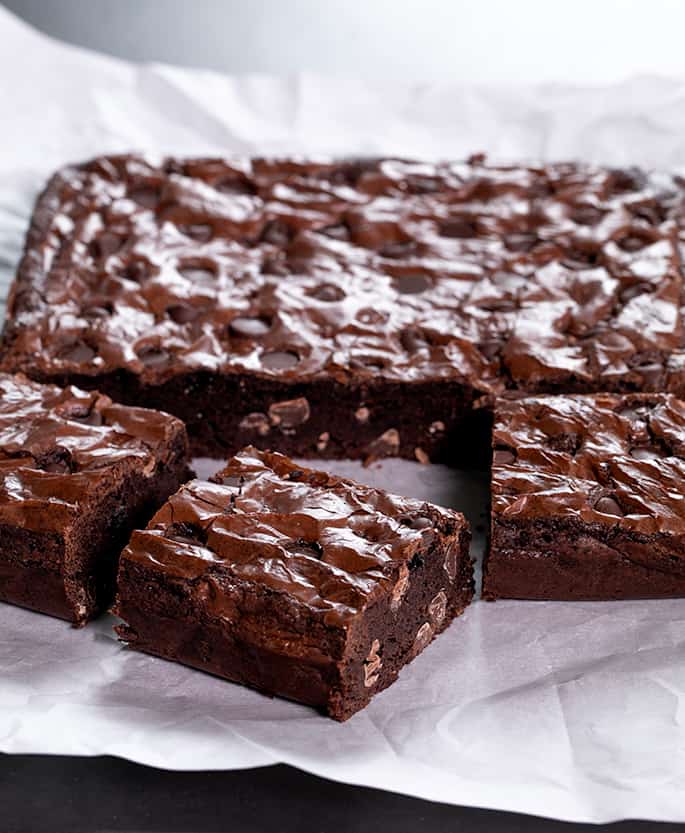
substitutions
Ingredient Substitutions
Dairy free
Use a vegan butter in bar form, like Melt or Miyoko’s. For best results, avoid soft tub-style spreads. If needed, try half Earth Balance sticks and half shortening (like Spectrum or Crisco). Don’t forget to use dairy-free chocolate chips.
Egg free
Replace the eggs with two chia eggs or flax eggs. The texture will be slightly different, and flax may add some flavor—but the chocolate usually covers it well.
Corn-free
Swap the cornstarch for an equal amount of arrowroot or potato starch. Both work well in this recipe.
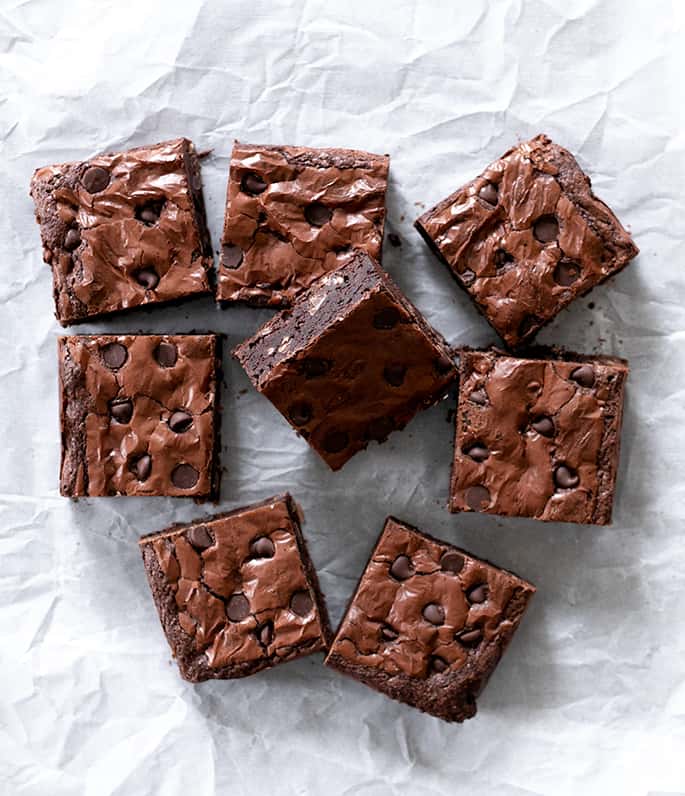
Gluten Free Brownie Recipe
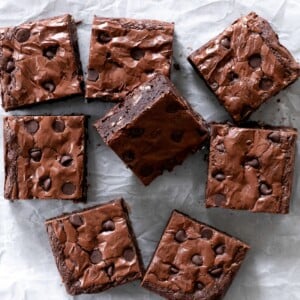
Equipment
- Handheld or stand mixer (or whisk with stamina!)
Ingredients
- 9 tablespoons (126 g) unsalted butter, chopped
- 1 ¼ cups (250 g) granulated sugar
- 2 (100 g out of shell) eggs, at room temperature
- 1 teaspoon pure vanilla extract
- 1 cup (80 g) unsweetened cocoa powder, natural or Dutch-processed
- ⅓ cup (47 g) all purpose gluten free flour blend, (See Recipe Notes)
- ⅛ teaspoon xanthan gum, omit if your blend already contains it
- 2 tablespoons (18 g) cornstarch
- ⅛ teaspoon baking soda
- ¼ teaspoon kosher salt
- 5 ounces semi-sweet chocolate chips
Instructions
- Preheat your oven to 325°F. Line an 8-inch square light-colored metal pan with parchment or nonstick foil. Set aside.
- In a small saucepan, melt the butter and sugar over medium heat, stirring occasionally, until the mixture begins to bubble. Remove from the heat and let cool slightly.
- In a large bowl, whisk the eggs and vanilla until well combined. Slowly drizzle in the warm butter-sugar mixture, whisking constantly.
- Whisk in the cocoa powder until smooth.
- Switch to a spatula and stir in the flour blend, xanthan gum (if using), cornstarch, baking soda, and salt.
- Fold in about 4 oz of the chocolate chips. The batter will be thick and sticky.
- Spread the batter evenly in the prepared pan and smooth the top. Sprinkle the remaining chocolate chips over the top.
- Bake for about 30 minutes, or until the center no longer looks wet.
- Cool the brownies in the pan at room temperature. For clean slices, chill the pan in the refrigerator for at least 1 hour.
- Lift out the brownies, slice into 9 squares, and serve—or wrap and freeze for later.
Video
Notes
Nutrition
Nutrition information is automatically calculated, so should only be used as an approximation.
make ahead/leftovers
Storage instructions
At room temperature: Brownies will stay fresh for a few hours uncovered, or up to 2 days if wrapped tightly.
In the refrigerator: Store in an airtight container for up to 1 week.
In the freezer: Wrap tightly in freezer-safe wrap and freeze for up to 2 months. Defrost at room temperature before serving.
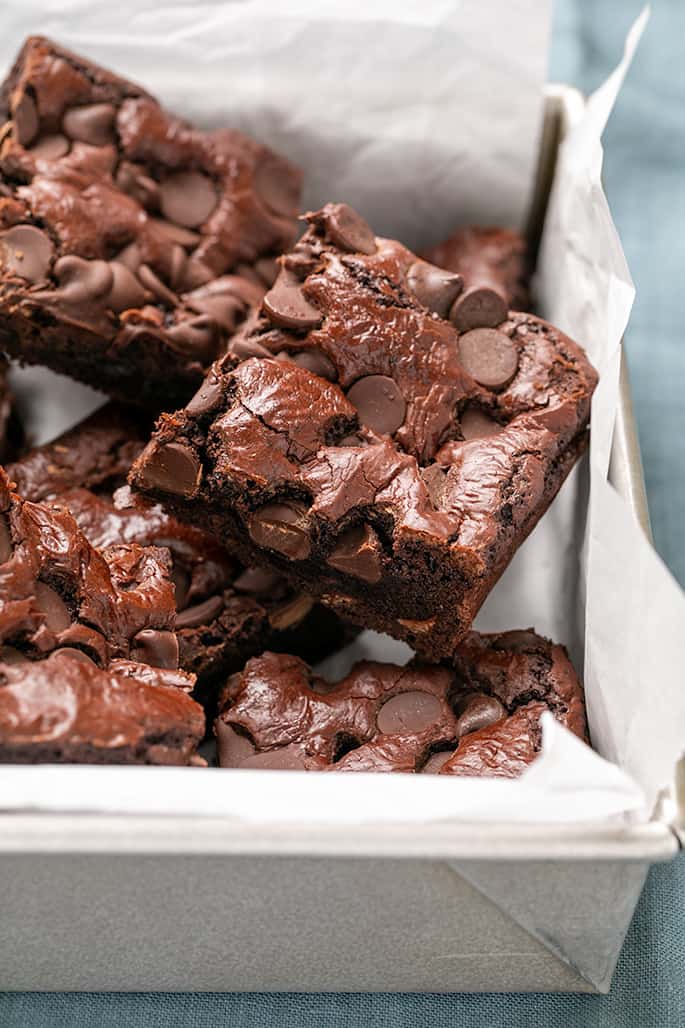
FAQs
Nope! A handheld mixer makes it easier, but you can whisk by hand—just be vigorous, especially when beating in the eggs and cocoa powder.
Yes, but bake for about 5 minutes less. The brownies will be a bit thinner.
Yes, but bake in two 8- or 9-inch square pans. A 9×13 pan will make them too thick to bake evenly.
Use nonstick foil or parchment. If you’re using parchment, clip it to the sides of the pan with heat-safe clips so it doesn’t shift.
Not in this recipe—but I have separate recipes for almond flour brownies and oat flour brownies that are designed for those flours.
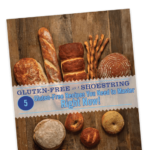

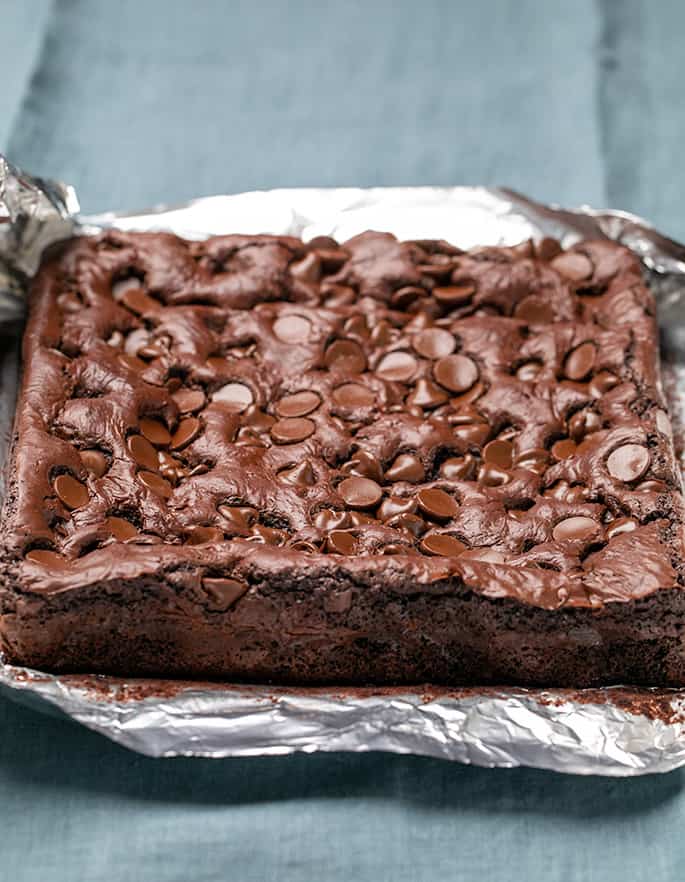
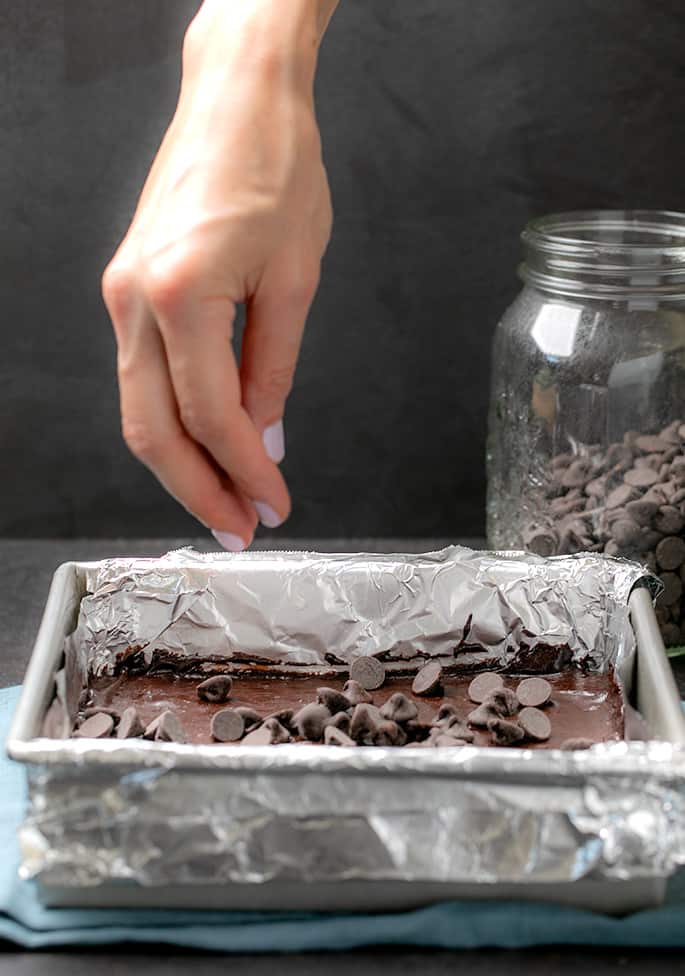
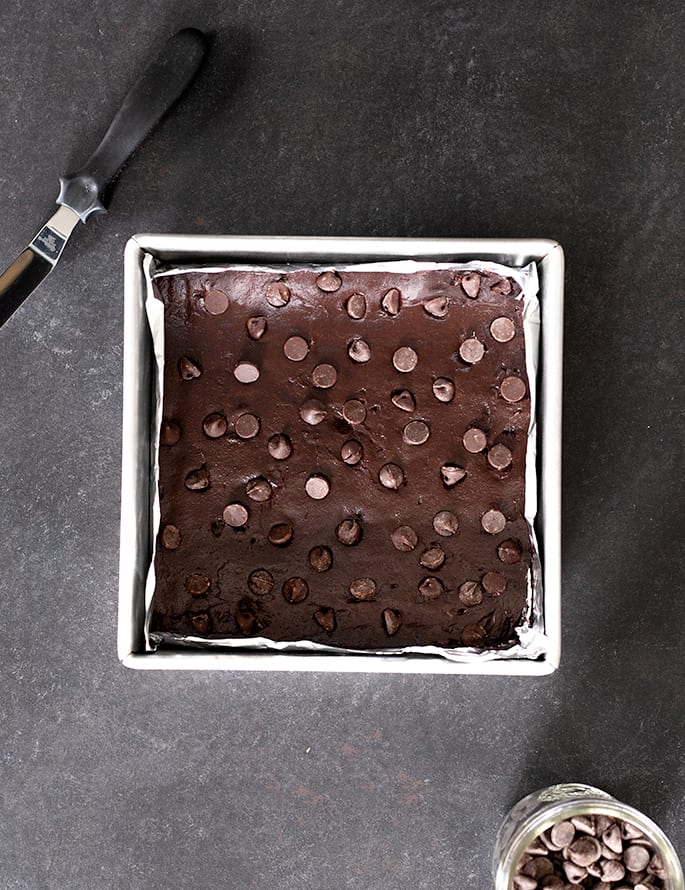
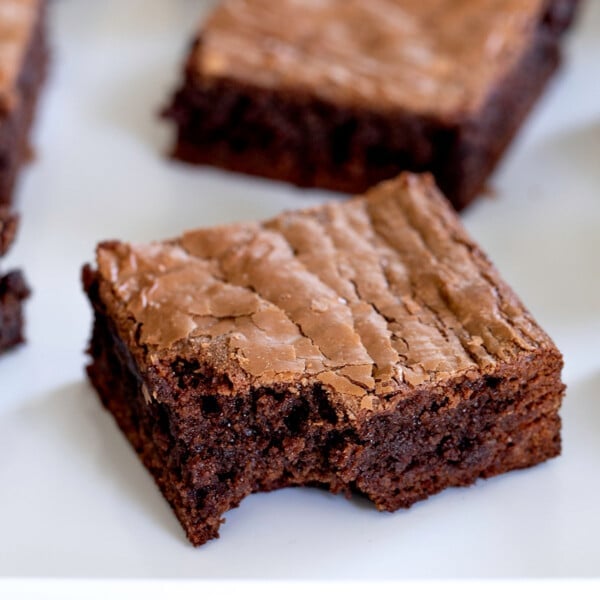
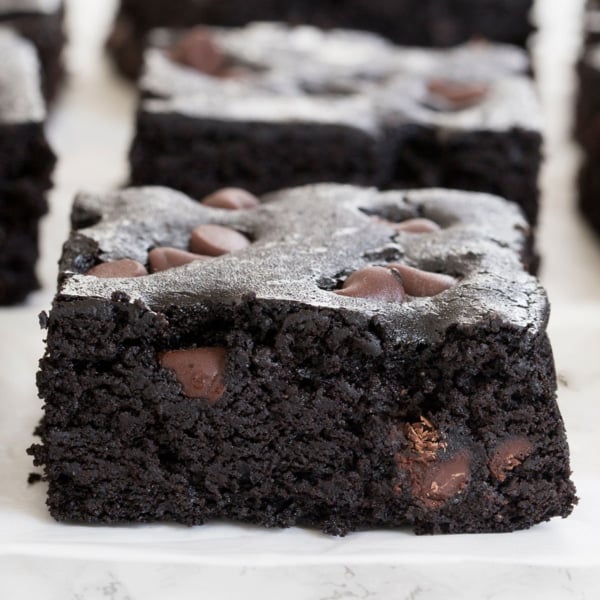
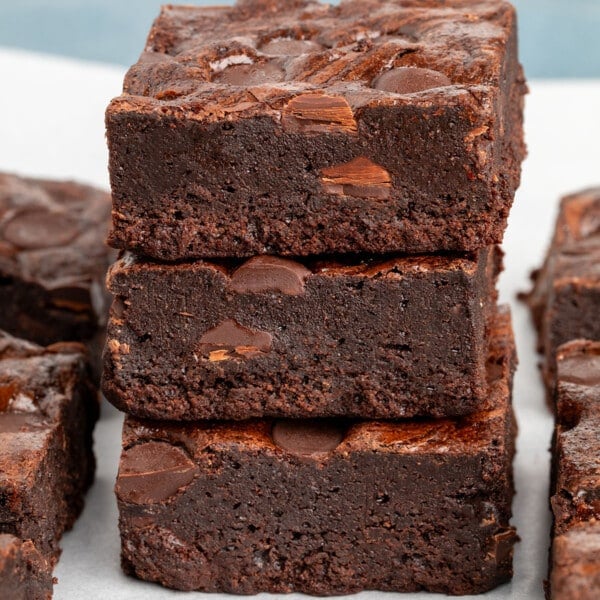
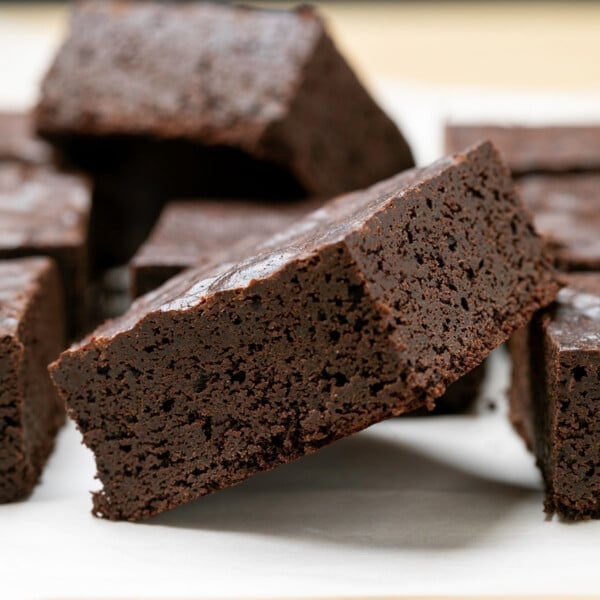









These are AMAZING! I was diagnosed celiac 5 years ago and have usually just used gluten free boxed brownies… never again! I used the Great Value gluten free flour from Walmart and it worked really well. My husband also loves them and he’s not gluten free. Thank you for all great recipe!!
So glad to hear that, Abby! Since brownies don’t have that much flour in proportion to other ingredients, I think this is a good recipe for using many brands of gluten free flour blends. Thanks for sharing your experience!
These brownies were so easy to make and turned out exactly as pictured!
I’m so glad to hear that, Kathy. Thank you for sharing your experience!
Hi Nicole, thank you for the great recipe. I’ve made these twice now. I threw in a cup of pecans and topped with a caramel drizzle the second time. This is the best chewy, fudgey brownie recipe I have tried.
My house is divided on chewy vs slightly cakey brownies. If I wanted them to be a little more cake like (just a LITTLE) is there anything you would suggest I try first? I would really appreciate your advice!
Thank you
Hi, Sean, so glad you loved the brownies. These really aren’t designed to be cake-like, so there’s nothing you can do that will make them that way. If you’re looking for a cakier brownie, I’d try these Little Debbie style gf brownies.
I’m not sure what we did wrong but when we were trying to milk the sugar with avocado oil instead of butter, because I am very free, it turned into a hard fall and it never melted. If you have any suggestions, let me know.
I’m afraid you can’t replace butter with oil, Nicole. You need to use vegan butter if you’d like to make these dairy free.
Amazing!